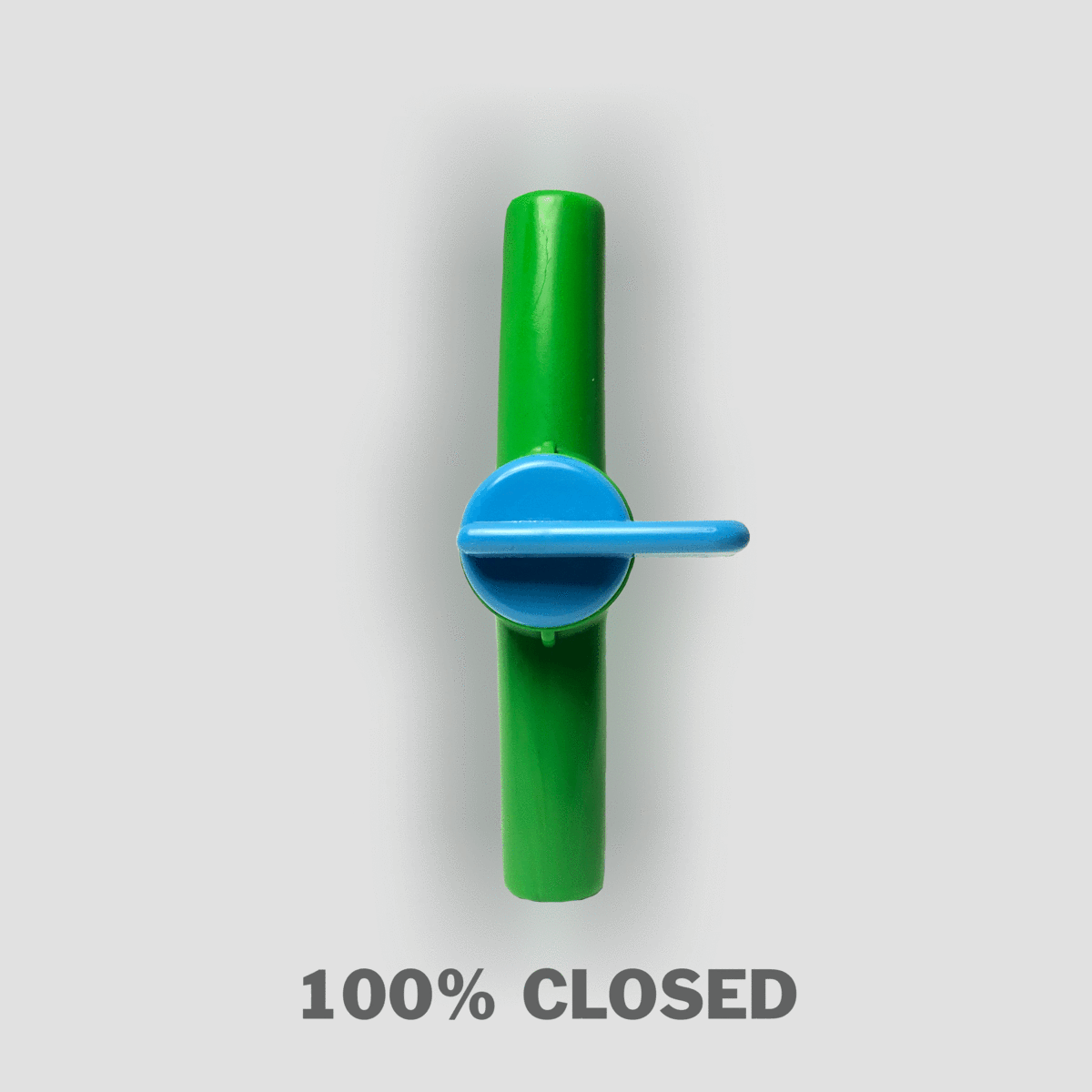Here’s a quick list of things to do or check for once you have your new EON in your hands to ensure your jellies live a happy and healthy life!
Before Adding Jellyfish
Cycle Your Aquarium

We can’t say this enough: cycling is the most important step in setting up a new aquarium and keeping animals healthy. This isn’t a jellyfish-specific task and is required for all new saltwater aquariums. New aquariums need to be “seasoned” with beneficial bacteria that handle the organic waste created from daily feedings. An aquarium can quickly become toxic once animals and food are introduced without cycling it.
Everything you need to know about cycling can be found in this previous blog post.
Position The Drip Tray Correctly
The drip tray is the top layer of the filter box that collects drain water and evenly disperses it across the filters. This even dispersment of water is essential to achieve optimal filtration and to keep your EON in a biologically stable state (i.e. properly cycled). If the drip tray is unevenly collecting water and moving it through only a small area of the filters, the rest of the filter box will be dry and beneficial bacteria won’t grow there during cycling. This has now created a weak biological filter because there aren’t as many beneficial bacteria established as possible—meaning, there’s a higher chance of an ammonia spike and the entire aquarium cycling all over again.
To prevent this from happening, make sure your drip tray is pushed all the way towards the drain, flush underneath it. Then watch to see how more evenly it collects water.
Bleed Air From The Spray Bar Lines
When first filling your EON with water, air is going to be stuck throughout the plumbing lines (the clear tubing) and spray bars. After it’s filled and the pump is turned on, you will see some air being pushed out, creating bubbles, but it won’t all exit the lines. So, you have to manually do it using the two green spray bar valves in the sump. “Bleeding the air” refers to repeatedly opening and closing these valves to force the air outward.
 When looking into the sump, the furthest valve moves water to the bottom spray bar and the valve closest to you moves it to the top spray bar. Close one valve 100% and open the other 100%. You will see more air coming out of the open spray bar. Then do the opposite to get air moving out of the other valve. Do this repeatedly, back and forth, until there are no more bubbles flying out of the spray bars. This helps ensure that air bubbles won’t exit into the main exhibit area while you have jellyfish in there — PSA: jellyfish + bubbles = no fun!
When looking into the sump, the furthest valve moves water to the bottom spray bar and the valve closest to you moves it to the top spray bar. Close one valve 100% and open the other 100%. You will see more air coming out of the open spray bar. Then do the opposite to get air moving out of the other valve. Do this repeatedly, back and forth, until there are no more bubbles flying out of the spray bars. This helps ensure that air bubbles won’t exit into the main exhibit area while you have jellyfish in there — PSA: jellyfish + bubbles = no fun!
Double Checking Your Water Quality
Before introducing your first jellyfish, you should double check that the water quality is optimal after cycling has finished. Here’s what we recommend your water quality be for moon jellyfish:
- Temperature = 62-78°F
- Salinity = 31-33 ppt (1.022-1.024 Specific Gravity)
- Ammonia = 0 ppm
- Nitrite = 0 ppm
- Nitrate = <40 ppm
After Adding Jellyfish
Watch Your Jellyfish
After you’ve acclimated your new jellyfish, watch and observe them for a bit as they move about their new home. They should be belling evenly with their tentacles out and untangled. Check out the video below to see how open and active your jellies should be after proper acclimation.
Fine Tune The Flow
Now that your jellies are in their new home, you need to fine tune the flow rate to accommodate their needs. Your EON will most likely be at 100% open when it’s done cycling, but depending on the quantity and size of your jellies, you may need to turn it slightly up or down to keep them happy.
Your jellies shouldn’t be moving around like a washing machine, but they also shouldn’t be floating in the same spot for too long. You want the flow to gently sweep them from spray bar to spray bar, as you can see in the video above.
If the flow is too low, the jellies won’t be motivated to bell causing irregularities in their body shape and how they eat, ultimately leading to weak and shrinking jellies. This can also lead to other issues like tentacle balls on the jellies and slow filtration, affecting water quality. If the flow is too high, they won’t be able to properly capture food and will also lead to weak and thin jellies.
Keep An Eye On Water Quality

It’s always good practice to keep an eye on ammonia and nitrite for a few days after adding the first jellyfish. Your biological filters are still fresh from cycling, so the newly established beneficial bacteria in those filters can be sensitive — meaning if the introductory bio load (the combination of anything that creates waste: food + animals) is too much from the get-go, the beneficial bacteria can go into shock. The bacteria can no longer handle the ammonia produced from the excess bio load and this causes an ammonia spike.
Feeding your new jellyfish on the lighter side for 1-2 days after cycling can help prevent an ammonia spike. This allows your beneficial bacteria to slowly ease into the new bio load. Once comfortable (when there hasn’t been an ammonia spike for 2-3 days after), then you can bump the feeding up to regular doses.


